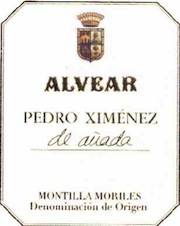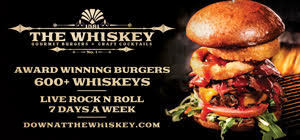 Pedro Ximenez: International man of mystery? World class athlete? Millionaire playboy? None of these, actually. As unusual as it may sound, Pedro Ximenez is a grape, otherwise known as PX to aficionados of the wine world. There is a story about a man of the same name, (or something close to it,) who is allegedly responsible for bringing this grape to Spain. Unfortunately, he was also none of these things, but this white grape varietal has a distinguished reputation all its own.
Pedro Ximenez: International man of mystery? World class athlete? Millionaire playboy? None of these, actually. As unusual as it may sound, Pedro Ximenez is a grape, otherwise known as PX to aficionados of the wine world. There is a story about a man of the same name, (or something close to it,) who is allegedly responsible for bringing this grape to Spain. Unfortunately, he was also none of these things, but this white grape varietal has a distinguished reputation all its own.
Pedro Ximenez the grape has been known to star in variations of white table wine in Chile. Fortified wines in Argentina very similar to those most commonly made in Jerez, Spain are derived from a closely-related varietal known as Pedro Gimenez. And in Australia, PX is used to make the fortified or sherry type wines known as Apera.
But how the grape ended up in Spain is of course not as important as why it does so well there. The region of Montilla-Moriles, where Alvear Pedro Ximenez de Avada is grown and produced, is well-known for its dessert wines, and probably most noted for sherry made from Pedro Ximenez. Pedro Ximenex responds well to the long, dry summers and hot sun in this area of Spain, and exemplifies the diversity of Spain’s growing regions while also representing the unique and, many believe, under-appreciated division of dessert and fortified wines like sherry.
The word “sherry” itself is not the name of a grape varietal, but of the style of sweet white wine that has been fortified (made more complex and stronger in alcohol content) by the addition of brandy. The Alvear PX 2008 is produced from grapes which have been dried on mats in the sun, concentrating the sweetness and resulting in a raisin-y flavor profile—just as one might suspect from sun-dried grapes.
The honeyed hue of this wine mirrors the honey nuances found in the mouthfeel and on the palate, along with almond, molasses, fig, toasted nuts, and of course, raisins. While enjoying and appreciating fortified wines takes time for a lot of people, the key is to sip and let the wine’s viscous consistency coat the tongue and throat. This, along with the concentrated sweetness and higher alcohol content, is why wines such as these are poured in much smaller doses measuring around three ounces, and usually never exceeding four.
{fblike}
For only $12 a glass/$48 a bottle at Eola Wine Company, this wine would make a wonderful accompaniment to a richer tobacco, such as that found in cigars or cloves, and each sip beckons for a bite of soft cheese like St. Andre, Maytag Blue or Purple Haze. Where honey makes a great drizzled topper for cheeses like these, the Alvear could easily take its place as a pairing partner. If cheese isn’t your thing, try pairing with the duck flatbread ($14). The richness of the duck and brie, tanginess of the balsamic glaze, and sweetness of the caramelized onions and fig—every ingredient would be complimented perfectly by this wine.
While sherry might not have the most distinguished reputation in the United States, its place in wine history, as well as its influence on the wine drinkers and producers of Spain cannot be denied. The Alvear Pedro Ximenez de Avada 2008 may not be a world-renown superstar or an iconic sex symbol, but it’s got personality, staying power, and is in a class all its own.










